
The Solar-Terrestrial Centre of Excellence (STCE) is a collaborative network of the Belgian Institute for Space Aeronomy, the Royal Observatory of Belgium and the Royal Meteorological Institute of Belgium.
 |
Published by the STCE - this issue : 20 Nov 2014. The Solar-Terrestrial Centre of Excellence (STCE) is a collaborative network of the Belgian Institute for Space Aeronomy, the Royal Observatory of Belgium and the Royal Meteorological Institute of Belgium. |
| Archive of the newsletters | Subscribe to this newsletter by mail |
The 11th European Space Weather Week kicked off in Liège, Belgium on 17 November. It is now in full swing, with more than 400 scientists, satellite and network operators, space weather end users,... gathering in the "Palais des Congrès" along the borders of the Meuse river.
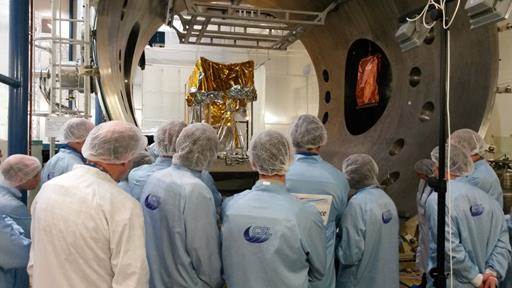
As a warming-up, there was a visit to the Centre Spatial de Liège on Monday morning. Participants were treated on an insight look of this spacecraft testing and instrument development facility, as well as a visit of the (very!) Clean Room.
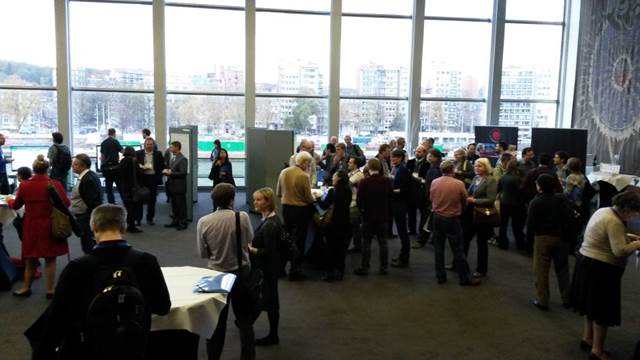
The congress centre is very spacious. Picture above shows only a third of the poster and coffee break area! This "Grand Foyer" is also the area where a daily space weather briefing is given by SWPC (image below), SIDC, BGS and the UK Met Office.
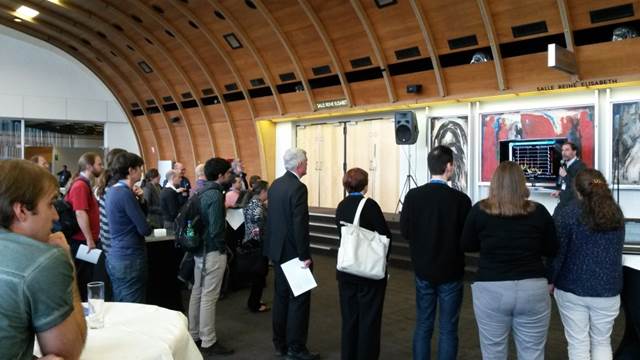
On Monday evening, Karel Schrijver (LMSAL) gave a very appreciated keynote lecture in the fully-packed congress auditorium. His talk on the place of "Our Sun among the stars" made clear how much we can learn from this comparison in the space weather domain.
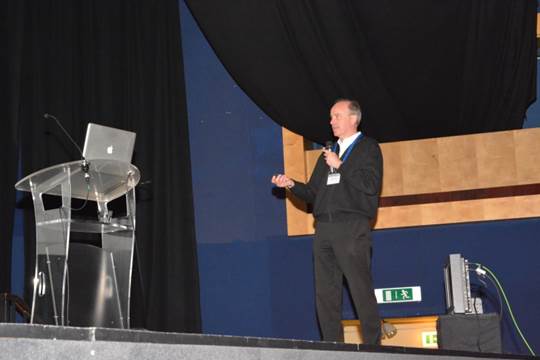
At all times, there are 3 sessions or splinters in parallel going on. These are very well attended, as can be seen from images underneath from the session "Solar Energetic Particle events" and the splinter "Space Weather Forecaster Forum".
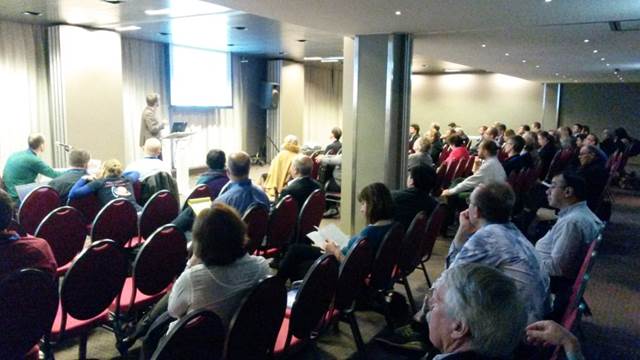
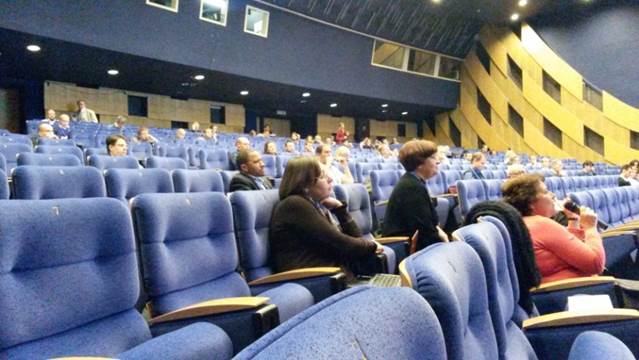
During this ESWW11, a whole series of space weather related spacecraft, instruments, models, tools and projects pass the revue. A selection of those has been put together in the word search puzzle underneath. Happy puzzling!
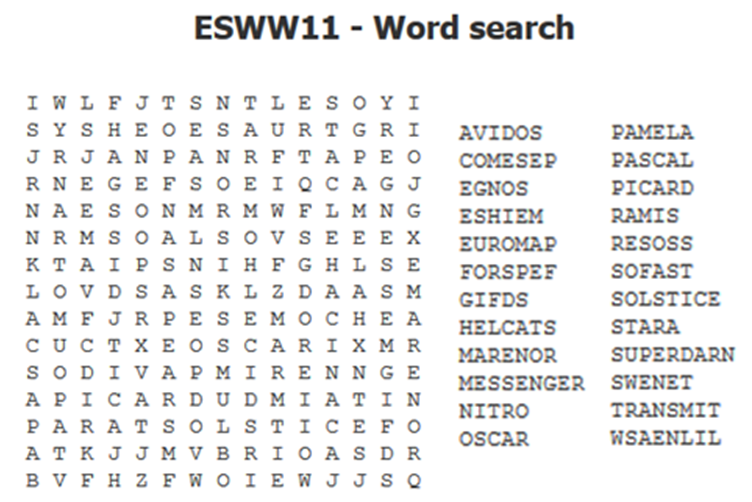
Solar flare activity fluctuated between low and moderate during the week.
In order to view the activity of this week in more detail, we suggest to go to the following website from which all the daily (normal and difference) movies can be accessed: http://proba2.oma.be/ssa
This page also lists the recorded flaring events.
A weekly overview movie can be found here (SWAP week 242).
http://proba2.oma.be/swap/data/mpg/movies/WeeklyReportMovies/WR242_Nov10_Nov16/weekly_movie_2014_11_10.mp4
Details about some of this week's events, can be found further below.

The big active region with who had the NOAA number 2192 assigned has returned to the earth view. The previous time this active region was in the earth view it was visible with the naked eye, using eclipse glasses.
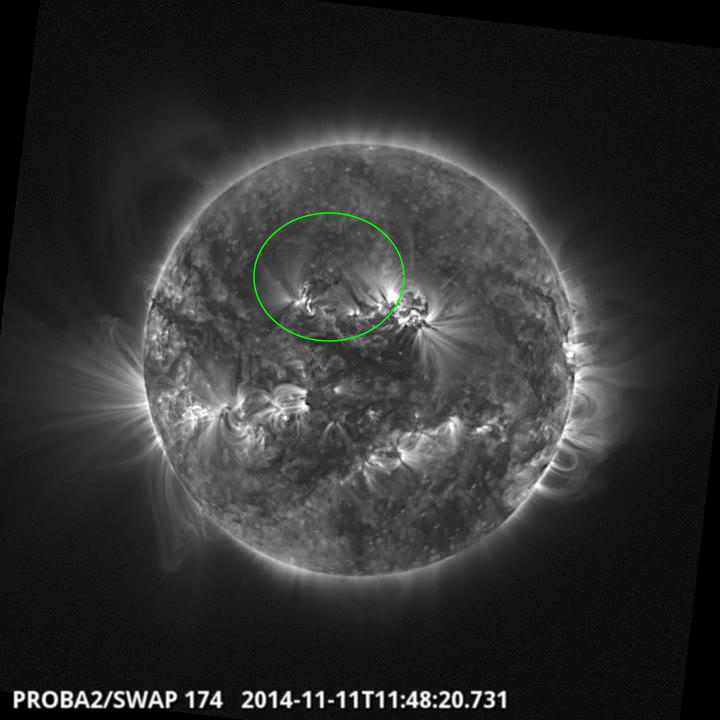
Eruption on the north east quad @ 11:48 SWAP image
Find a movie of the event here (SWAP movie)
http://proba2.oma.be/swap/data/mpg/movies/20141111_swap_movie.mp4
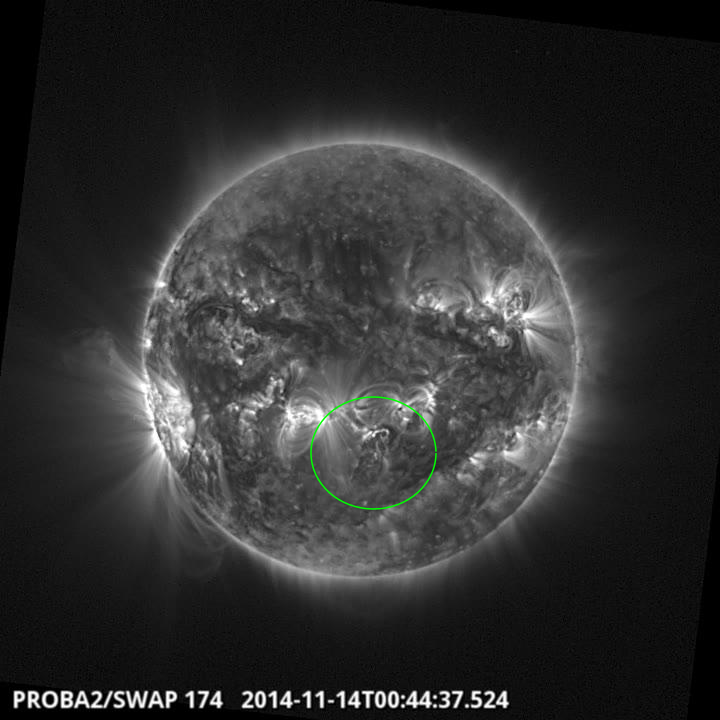
Eruption on the south half @ 00:44 SWAP image
Find a movie of the event here (SWAP movie)
http://proba2.oma.be/swap/data/mpg/movies/20141114_swap_movie.mp4
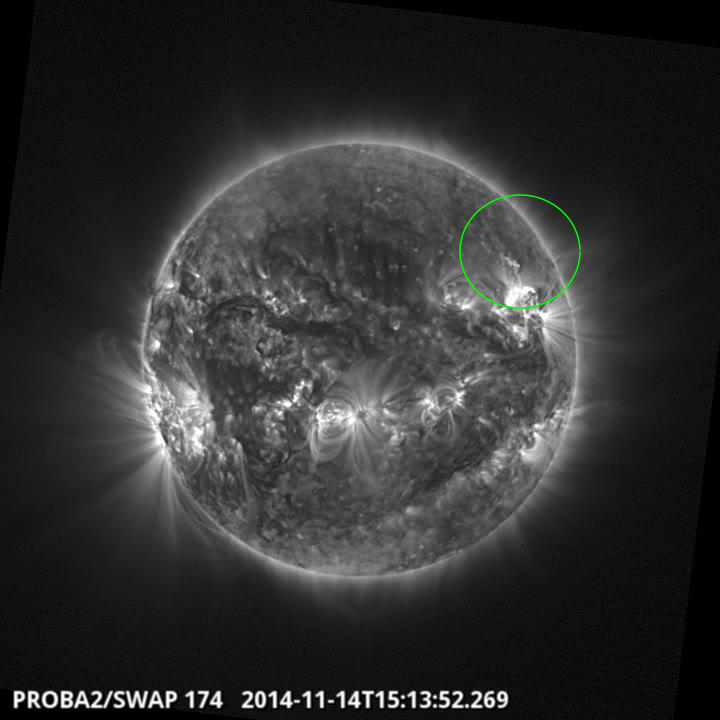
Eruption on the north west quad @ 15:13 SWAP image
Find a movie of the event here (SWAP movie)
http://proba2.oma.be/swap/data/mpg/movies/20141114_swap_movie.mp4
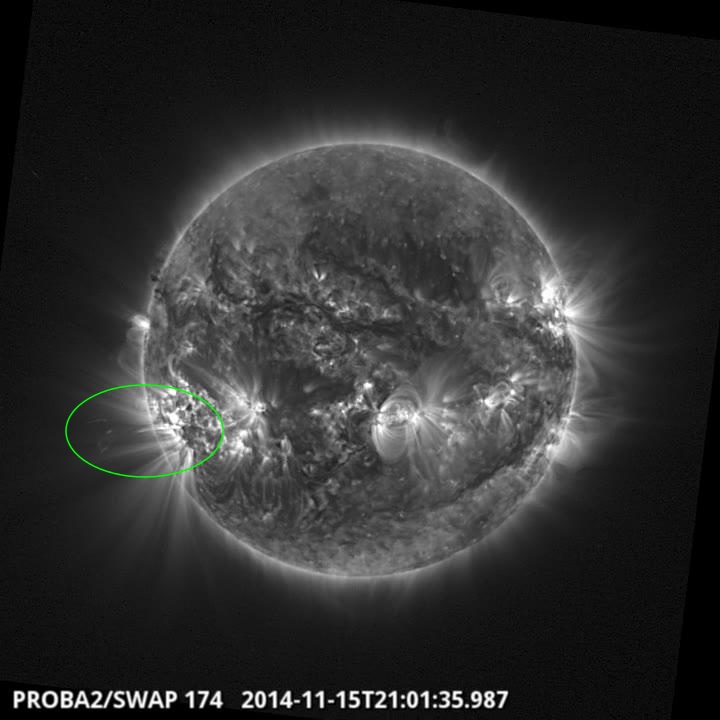
Eruption on the south east quad @ 21:01 SWAP image
Find a movie of the event here (SWAP movie)
http://proba2.oma.be/swap/data/mpg/movies/20141115_swap_movie.mp4
During the first five days of the week flaring activity was at the C-class level. From November 13 NOAA AR 2209 was responsible for the majority of the flares, including three M-class flares. In total 42 C-class flares and 3 M-class flares were reported this week. The strongest flare of the week was the M5.8 flare reported on November 16, its source region NOAA AR 2209 was at that moment situated at S12 E46. The flare peaked at 17:48 UT, and similarly to other flares originating from this active region it had no associated CME.
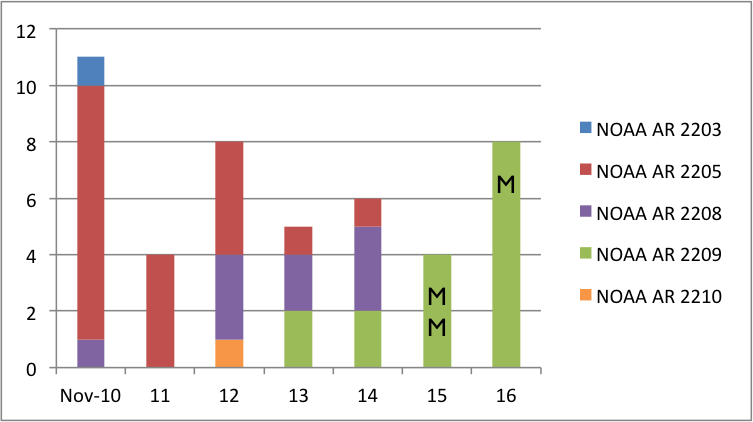
Only one wide CME was observed this week. The partial halo CME on November 11 was first seen in the SOHO LASCO C2 field of view at 04:36 UT. The CME had angular width of about 200 degrees and the projected plane of the sky speed of about 500 km/s (as reported by the CACTUS software). The CME was associated with the flare from, at that moment, behind the east solar limb active region (NOAA AR 2209) and was therefore not Earth-directed.
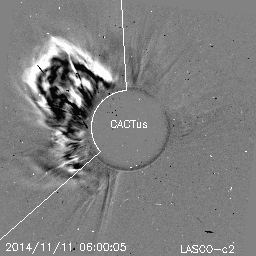
| DAY | BEGIN | MAX | END | LOC | XRAY | OP | 10CM | TYPE | Cat | NOAA |
| 15 | 1140 | 1203 | 1210 | S9E63 | M3.2 | SB | 229 | 2209 | ||
| 15 | 2038 | 2046 | 2050 | S13E63 | M3.7 | 1N | 240 | III/2 | 2209 | |
| 16 | 1735 | 1748 | 1757 | M5.7 | 300 | III/1 | 2209 |
| LOC: approximate heliographic location | TYPE: radio burst type |
| XRAY: X-ray flare class | Cat: Catania sunspot group number |
| OP: optical flare class | NOAA: NOAA active region number |
| 10CM: peak 10 cm radio flux |
The week started with the arrival of the partial halo CME from November 7 at L1. The shock-like structure, seen in ACE data as the sudden increase of the interplanetary magnetic field strength to about 24 nT, elevation of the solar wind speed up to 590 km/s and the concurrent temperature increase, was observed at around 01:30 UT on November 10.
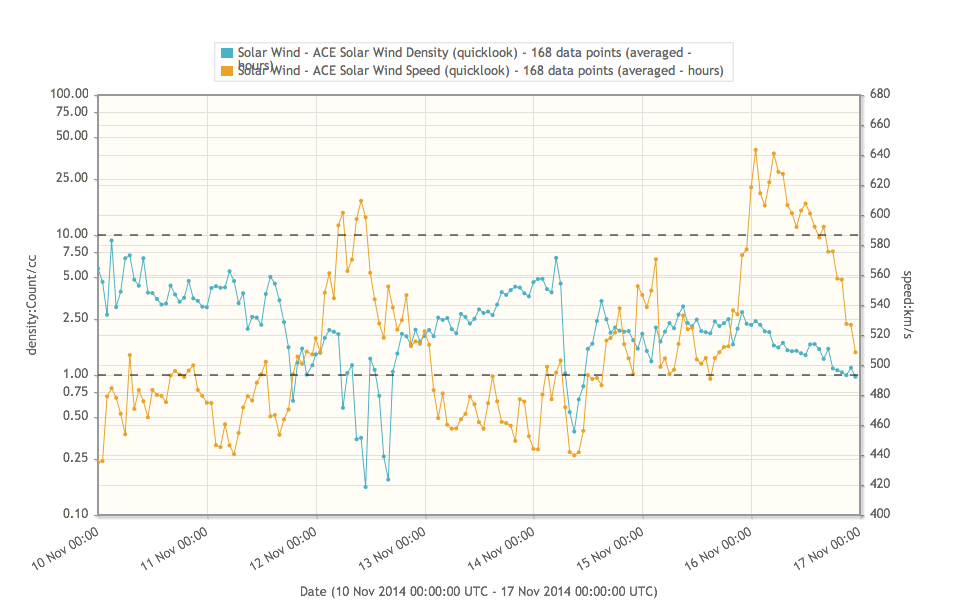
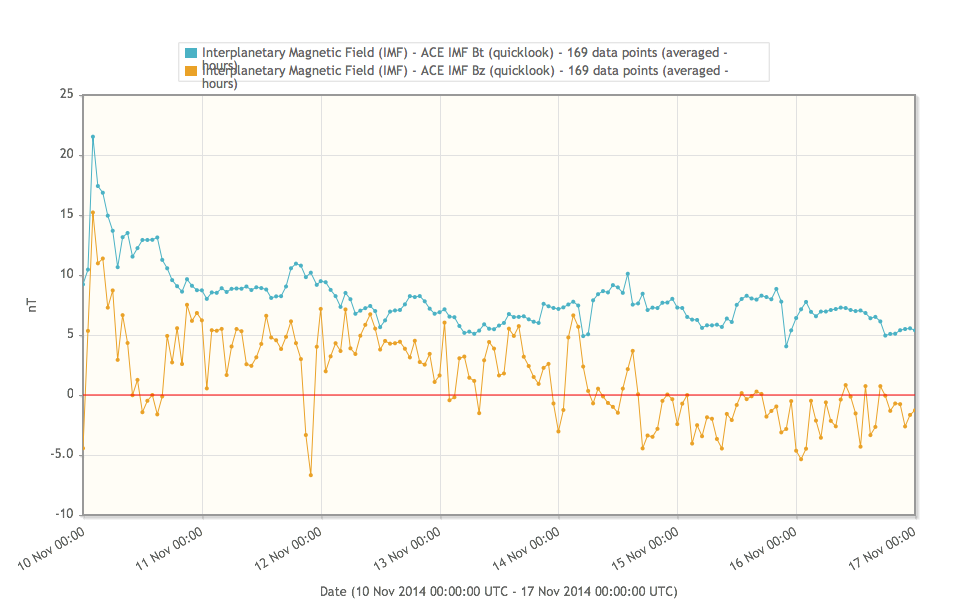
The interplanetary magnetic field magnitude stayed slightly elevated (fluctuating at about 7nT) until the end of the week. ACE solar wind data indicate arrival of the sector boundary at approximately 06:00 UT on November 14.
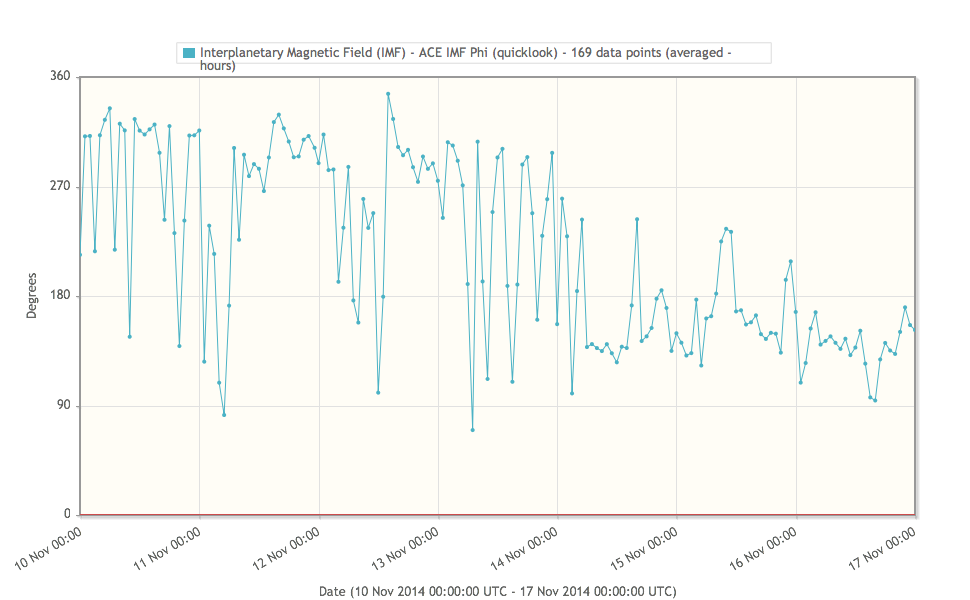
The crossing of the sector boundary was followed by the arrival of the fast flow late on November 15. The fast flow, with the maximum solar wind speed of about 700 km/s, arrived to the Earth on November 16. This fast flow was associated with the extended low latitude coronal hole which reached the central meridian in the morning of November 13.
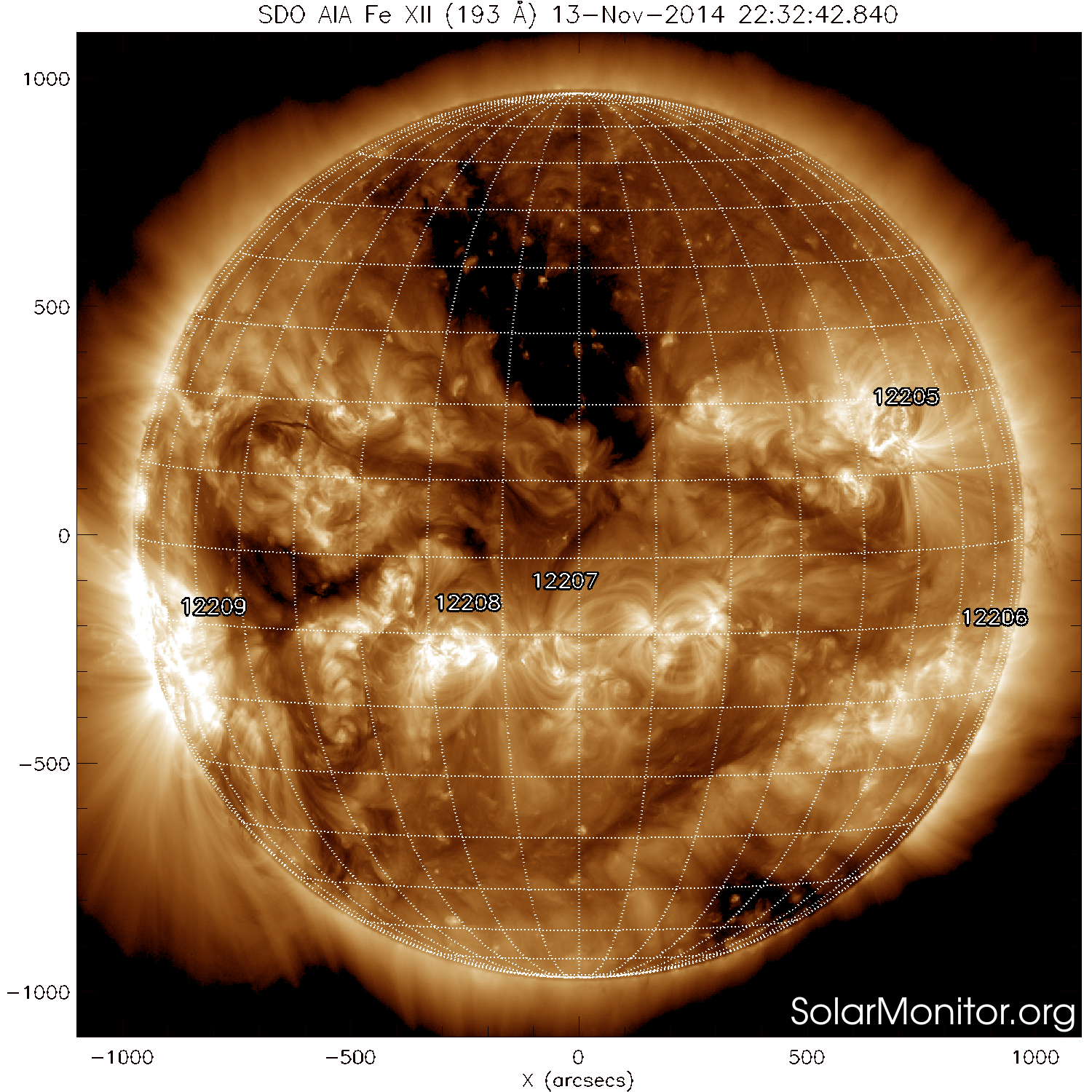
The arrival of the partial halo CME on November 10 caused disturbed geomagnetic conditions (local stations Dourbes and Izmiran reported value of K=4 and NOAA reported Kp=5). Due to the sector boundary change and the arrival of the fast solar wind, geomagnetic conditions were unsettled to active (local stations Dourbes and Izmiran reported value of K=4, and NOAA reported Kp=4) on November 15 and 16.

The figure shows the time evolution of the Vertical Total Electron Content (VTEC) (in red) during the last week at three locations:
a) in the northern part of Europe(N61°, 5°E)
b) above Brussels(N50.5°, 4.5°E)
c) in the southern part of Europe(N36°, 5°E)
This figure also shows (in grey) the normal ionospheric behaviour expected based on the median VTEC from the 15 previous days.
The VTEC is expressed in TECu (with TECu=10^16 electrons per square meter) and is directly related to the signal propagation delay due to the ionosphere (in figure: delay on GPS L1 frequency).
The Sun's radiation ionizes the Earth's upper atmosphere, the ionosphere, located from about 60km to 1000km above the Earth's surface.The ionization process in the ionosphere produces ions and free electrons. These electrons perturb the propagation of the GNSS (Global Navigation Satellite System) signals by inducing a so-called ionospheric delay.
See http://stce.be/newsletter/GNSS_final.pdf for some more explanations ; for detailed information, see http://gnss.be/ionosphere_tutorial.php
Start : 2016-07-30 - End : 2016-08-07
The 41st COSPAR Scientific Assembly will be held in Istanbul,
Turkey from 30 July - 7 August 2016. This Assembly is open to all
bona fide scientists.
Website:
https://www.cospar-assembly.org/
Presentation, in Dutch, given at the open doors of the Space Pole, Belgium, 2014
http://www.spaceweather.eu/en/repository/show?id=552
http://www.spaceweather.eu/en/repository/show?id=553